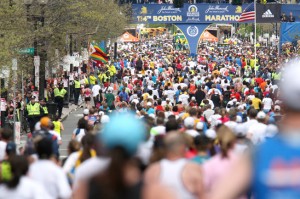Carb Loading
Running in the OKC Memorial Marathon on Sunday? If you’re a rookie or a veteran of the famous 26.2, you’ve been preparing by logging more miles and a major change in your diet.
Eating to fuel training runs should look different than eating before a big run. Just as your training mileage has tapered off close to the race, runners switch their diet to ‘carb load’ within the week before the race. So what exactly does carbohydrate loading do for us before a race and how can it be effective?
Carbohydrates are the body’s preferred source of energy. Our bodies digest and absorb carbohydrates to store as glycogen in our liver and muscle; when we need energy, it is utilized to produce ‘fuel’. (We also use fat for energy, but that requires a different, slower method.) When you are running, you need sustained energy. So runners/athletes ‘carb load’ to fill up their tank before the race. You can only store so much glycogen before the carbohydrates or any food for that matter turn to fat stores.
So, you take it a few days at a time. You don’t just ‘carb load’ the night before, rather you gradually build your stores 2-3 days prior to the race. In order to efficiently fill your glycogen storage in the liver and muscle, you increase your carbohydrate intake to 80-90%, while decreasing % of protein and fat in your diet.
Depending on your muscle storage capacity, humans can store between 300-500 grams of glycogen in both the liver and muscle(more in the muscle and typically 80-100g in the liver). While your exercise has tapered within the week prior to the race, you are using less of your glycogen stores so they are storing up. Keep in mind that fueling during a marathon will be essential to delay onset of fatigue because those stores will be depleted within about 90 minutes of exercise.
Sample Carb Loading Day (for a 150 pound runner)
BREAKFAST
1 bagel with 2 tablespoons strawberry jam (71 g)
1 medium banana (27 g)
8 ounces fruit yogurt (41 g)
8 ounces orange juice (26 g)
Water
MORNING SNACK
2 Nature Valley Oats ‘n Honey
Granola Bars (29 g)
8 ounces Gatorade (14 g)
LUNCH
1 large baked potato with 1/4 cup salsa (69 g)
1 sourdough roll (40 g)
8 ounces chocolate milk (26 g)
1 large oatmeal cookie (56 g)
Water
AFTERNOON SNACK
1 Clif Bar (42 g)
8 ounces Gatorade (14 g)
DINNER
1 chicken burrito with rice, corn salsa, and black beans (105 g)
1 2-ounce bag Swedish Fish (51 g)
Water
CARB TOTAL 611 g
- Don’t just sign up for the pasta dinner the night before your race. That won’t be enough and you’ll probably feel bloated the morning of your race.
- Don’t over do it- spread out your carb loading over 3 days up to the race.
- Hydrate! It won’t matter if you have all the fuel in the form of glycogen ready to go because without water and adequate hydration, you’ll be dead by mile 10.
- Proper carb-loading will make you retain water, so if you notice the scale is creeping up during these few days- don’t sweat it. It’s normal.
What does your carb-loading plan look like? Tell us about your diet as a runner or athlete. We would love to hear from you. sls
Sample meal provided by Runners World.com


